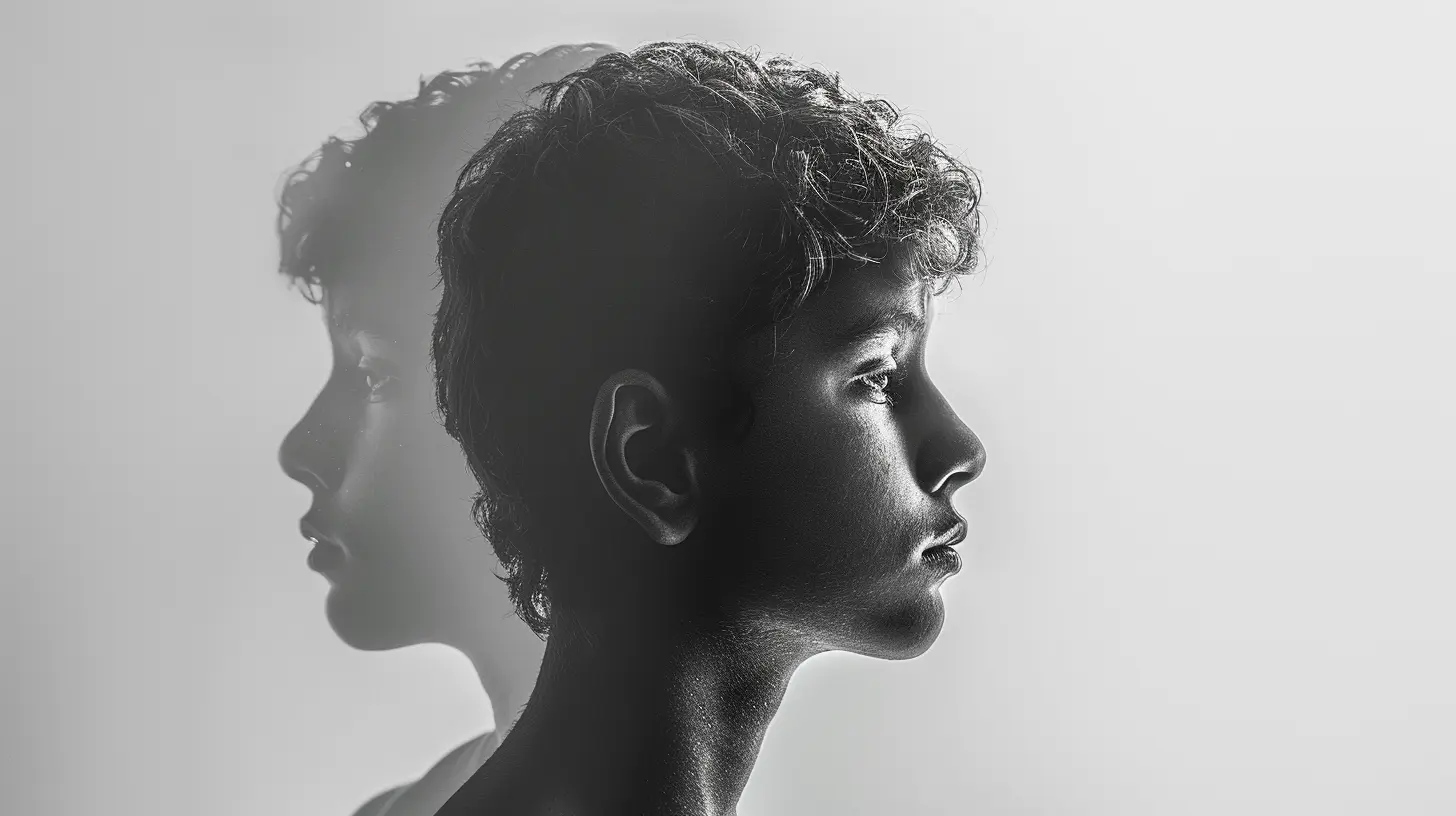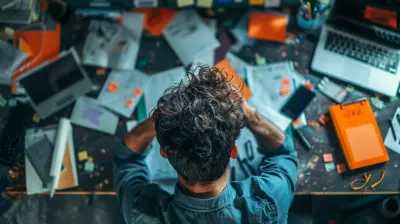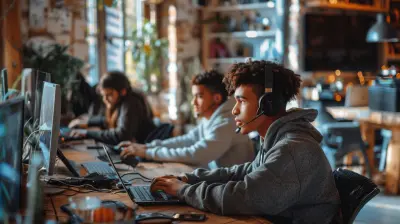How to Identify Twice-Exceptional Students in Gifted Education
22 June 2025
Gifted education is already a complex landscape, but when it intersects with learning disabilities or developmental differences, it becomes a whole new ballgame. That’s where the term “twice-exceptional” or “2e” comes in. It's a label that's both powerful and misunderstood. If you’ve ever come across a student who seems brilliant in one area but struggles in another, you might just be looking at a twice-exceptional learner.
In this article, we’re diving deep into how to identify twice-exceptional students in gifted education – because recognizing them is the first, and arguably most important, step to helping them thrive.
What Does “Twice-Exceptional” Even Mean?
Let’s start with the basics. A twice-exceptional (2e) student is someone who is both gifted and has a learning disability or some other form of neurodiversity, such as ADHD, autism, or dyslexia. Think of it like this: they might be brilliant at math but struggle to read a paragraph. Or they may write the most vivid stories but can’t sit still in class.Now, that’s a tricky combination, right? These kids often fly under the radar because their strengths and weaknesses can cancel each other out. Teachers might only see the behavior problems or just the exceptional talent, missing the full picture entirely.
Why Identifying 2e Students Is So Important
These students are often misunderstood. They may be labeled as lazy, defiant, or underachieving when, in reality, their brain just works differently. Left unidentified, they may never receive the support they need – and that’s a missed opportunity for everyone.Early identification can mean the difference between a student who struggles academically and emotionally and one who feels empowered and supported. It’s not just about school performance; it’s about mental health, confidence, and long-term success.
Common Characteristics of Twice-Exceptional Students
There’s no one-size-fits-all here, but there are some common signs that educators and parents can watch for. Let’s break them down.1. Asynchronous Development
2e kids often develop unevenly. They might have the vocabulary of a college student but the emotional control of a toddler. That disconnect can be confusing for adults and frustrating for the child.2. High Verbal Ability but Poor Writing or Reading Skills
This mismatch is a big red flag. If a student can explain complex ideas out loud but can’t get them down on paper, there could be an undiagnosed processing issue at play.3. Intense Interests or Hyperfocus
Ever met a kid who can tell you everything about the universe but forgets to hand in homework? That’s classic 2e behavior. Their passions run deep, and they might hyperfocus on topics they love while struggling with mundane tasks.4. Frustration or Anxiety
When your brain is wired to go a mile a minute but your hands can’t keep up, frustration is inevitable. Many 2e students experience anxiety or low self-esteem because they know they’re capable but can’t demonstrate it in typical ways.5. Inconsistency in Performance
Sometimes they ace the test; other times, they bomb it. This inconsistency is a hallmark of twice-exceptionality. It’s not about effort, it’s about how they process and express information.
The Big Problem: Misidentification or Overlooking
Sadly, many 2e students get lost in the system. Why? Because standardized assessment tools don’t always account for their unique profiles.There are three main issues here:
- Giftedness masks the disability – Some students are so bright that their struggles are overlooked.
- Disability masks the giftedness – Or their challenges are so apparent that no one notices their talents.
- Both cancel each other out – Resulting in a student who appears “average” and isn’t flagged for any sort of support.
It’s like wearing a superhero cape and concrete boots at the same time – one lifts you up, the other weighs you down, and from the outside, it looks like you’re standing still.
How Teachers Can Spot 2e Students
So, how do we peel back the layers and identify these exceptional learners? Teachers play a critical role here. Let’s look at several ways they can dig a little deeper.1. Look Beyond Grades
Grades are only part of the story. A student who regularly participates in class discussions but struggles with written assignments might have a processing or language-based learning issue.2. Use Multiple Measures of Assessment
Relying solely on IQ tests or standardized scores often misses the mark. Incorporate portfolios, observational notes, creative work, or personal interviews to get a fuller picture.3. Collaborate with Specialists
Speech therapists, occupational therapists, school psychologists – these folks have tools and insights that can help paint a clearer picture of a student's cognitive and emotional profile.4. Trust Your Gut (and Theirs)
Sometimes, a teacher just knows something’s up. Likewise, take students' feelings seriously. If a student says, “I don’t get why I can’t do this,” they might be telling you more than you realize.The Role of Parents in Identification
Parents are often the first to notice something’s “off” – whether it's a child obsessively building Lego cities or melting down over reading homework. That makes them vital in the identification process.What Parents Can Do:
- Keep records of strengths, challenges, and patterns.- Seek independent evaluations if needed.
- Advocate for comprehensive assessments and individualized education plans (IEPs).
- Communicate frequently with teachers and specialists.
Open lines of communication between home and school can be the difference between a missed diagnosis and life-changing support.
Tools and Strategies for Identifying 2e Students
Here’s the fun part – or at least the practical part. Let’s talk tools.1. Psychoeducational Evaluations
These in-depth assessments measure cognitive strengths, weaknesses, and academic skills. They can help identify learning disabilities in gifted students or vice versa.2. Gifted and Talented Checklists
Developed for educators, these checklists highlight traits that go beyond IQ scores, such as creativity, problem-solving, and leadership.3. Behavioral Observations
Sometimes, watching how a student interacts with peers, handles frustration, or approaches tasks can provide clearer insights than any test.4. Functional Behavioral Assessments (FBAs)
When behavior is a concern, FBAs identify the root causes. Is the student acting out because they’re bored? Frustrated? Overwhelmed?Challenges in the Identification Process
Let’s be real — identifying 2e students isn’t always easy. There are barriers at every turn.1. Lack of Teacher Training
Many educators aren’t taught how to recognize twice-exceptionality. They’re trained to spot giftedness or disabilities – not both at once.2. Inflexible School Systems
Traditional education systems often box students into categories. You’re either gifted or you have a learning disability. Not both.3. Cultural and Language Biases
Some students from diverse backgrounds may be under-identified simply because the tools used aren't culturally responsive.Supporting Twice-Exceptional Students After Identification
Identifying them is only step one. Now what?1. Create a Strength-Based Approach
Focus on what they can do, not just what they struggle with. Use their strengths as leverage to support challenging areas.2. Design Individualized Support Plans
An IEP or 504 plan should be custom-tailored. One-size-fits-all doesn't fly here.3. Provide Emotional and Social Support
2e students may feel like they don’t fit in anywhere. Help them build resilience and confidence through counseling, mentoring, and social skills training.4. Offer Flexibility in the Classroom
Flexible deadlines, alternative assessments, or choice-based learning can go a long way in leveling the playing field.Final Thoughts
Twice-exceptional students are some of the most intriguing – and misunderstood – learners in our educational system. They sit at the intersection of brilliance and struggle, often overlooked because they challenge our expectations.But here's the kicker: when identified and supported correctly, 2e students don’t just thrive – they soar.
If you're a teacher, a parent, or just someone who wants to make a difference, keep your eyes – and your mind – open. Look for the student who doesn’t fit the mold. Chances are, they’re twice-exceptional. And they need you to see them for who they truly are.
all images in this post were generated using AI tools
Category:
Gifted EducationAuthor:

Zoe McKay
Discussion
rate this article
2 comments
Shelby O'Neal
This article highlights the nuanced challenge of identifying twice-exceptional students, who often slip through the cracks of both gifted and special education. A more integrated approach that emphasizes collaboration between educators, psychologists, and parents could enhance identification and support for these unique learners.
November 17, 2025 at 12:01 PM

Zoe McKay
Thank you for your thoughtful comment! I completely agree that collaboration among educators, psychologists, and parents is essential for effectively identifying and supporting twice-exceptional students.
Quorra Brown
Recognizing twice-exceptional students is crucial for unlocking their full potential. Let's celebrate their unique strengths and challenges, ensuring our educational practices empower every gifted learner to thrive and shine in their own distinctive way!
July 1, 2025 at 3:39 AM

Zoe McKay
Thank you for emphasizing the importance of recognizing twice-exceptional students! Celebrating their unique strengths and challenges is essential for fostering an inclusive and empowering educational environment.


